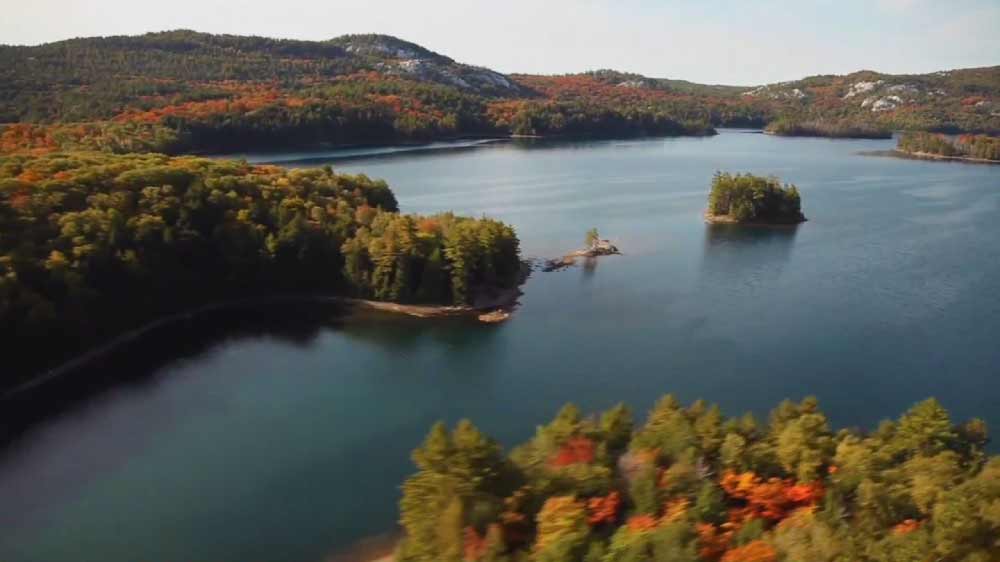A Park for All Seasons from Above episode 5 – Fall Colours: Get a bird’s-eye view of the world’s most stunning National and Provincial Parks of Canada by soaring high above arctic tundra, through towering mountain ranges, and pristine forests. From up in the air see nature’s beauty from a whole new perspective.
A Park for All Seasons from Above episode 5 – Fall Colours
Killarney Provincial Park is on Georgian Bay, in the Canadian province of Ontario. It encompasses a vast wilderness area of wetlands, forests and mountains. La Cloche Silhouette Trail climbs the white quartzite ridges of La Cloche Mountains. Cranberry Bog Trail crosses bogs and swamps. Canoe routes connect the park’s numerous clear lakes, such as George Lake. Glacier-sculpted pink granite cliffs frame the coastline.
Although not as well known as the world-famous Algonquin Provincial Park, Killarney is one of Ontario’s most popular wilderness destinations. With its sapphire blue lakes and white quartzite ridges it is considered one of the crown jewels of the Ontario Park system.
The park contains just one campground at the George Lake entrance as it is primarily a wilderness park. There are few facilities to allow visitors a chance to experience the solitude and beauty of its undisturbed natural setting. It has a number of hiking trails and canoe-in back-country camping. The canoe routes include well maintained portages between lakes. The campground includes six heated yurts which have electric lighting, a power outlet, a propane barbecue and bunk beds.
Situated on the north shore of Georgian Bay in the municipality of Killarney, the park straddles the La Cloche range, large rounded white quartzite hills that dominate the landscape. The white peaks and cliffs contrast with the pine and hardwood forests and the boggy lowlands that surround the park’s many lakes.
Quartzite is weather-resistant and contains few nutrient-bearing minerals. Soils, where present, tend to be shallow and infertile. Very stony sandy loam is the most common soil texture reported. Podzol profile development is usual in well-drained situations. Mineral-rich rock types such as diabase and limestone occur locally and the soils that have developed over them support some of the park’s more luxuriant vegetation.
